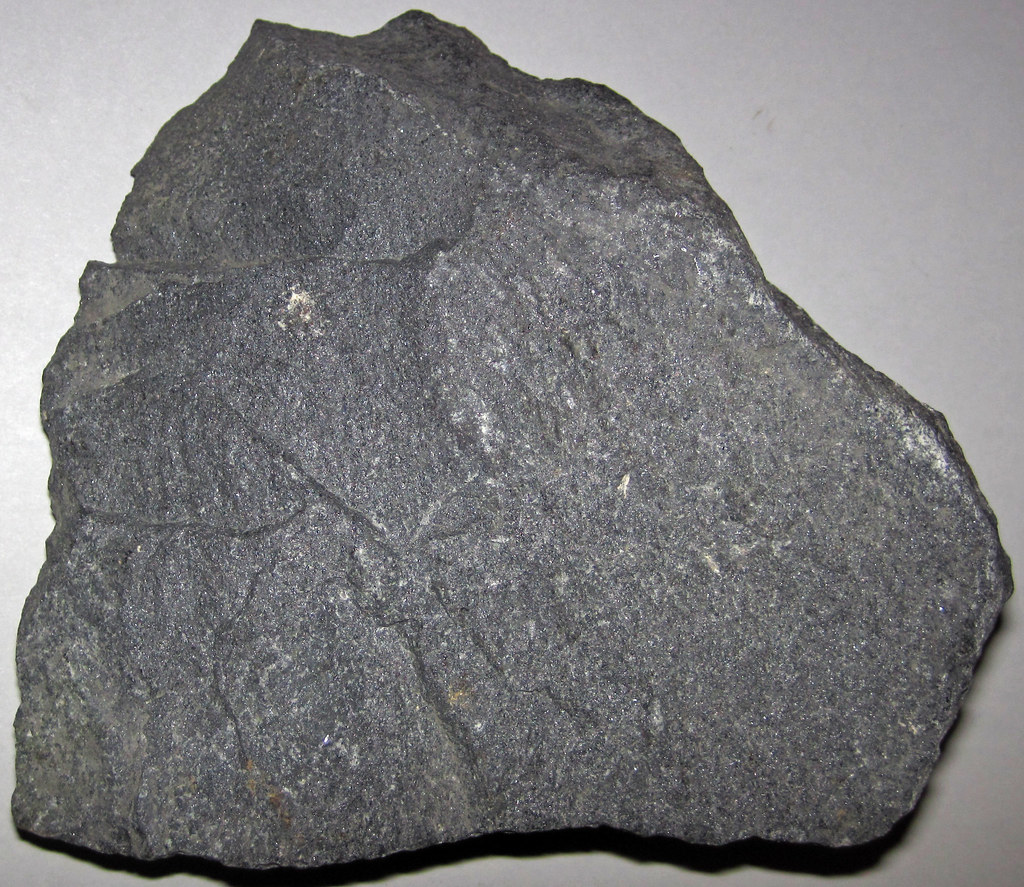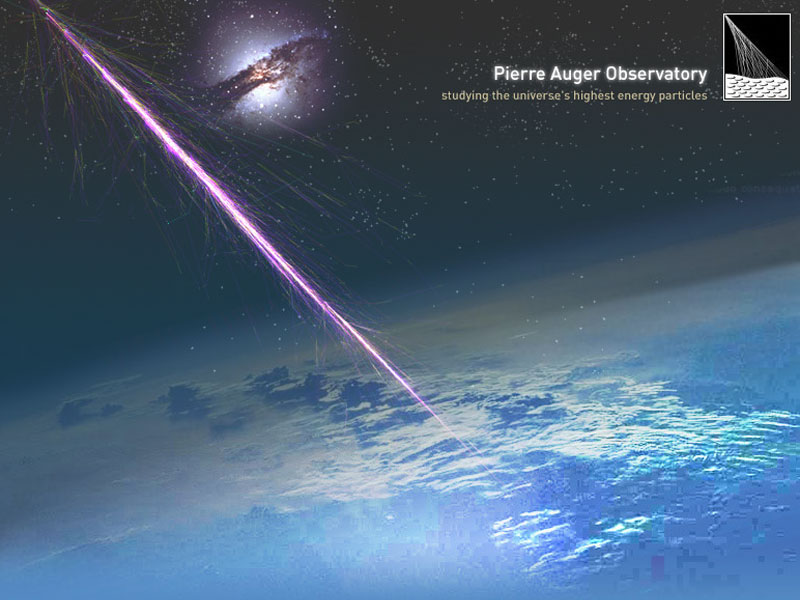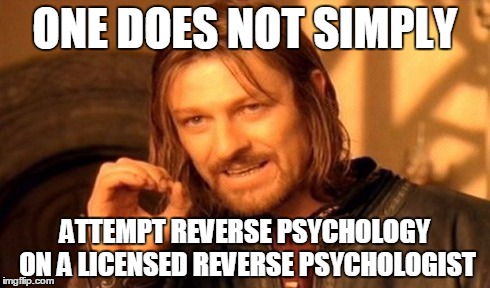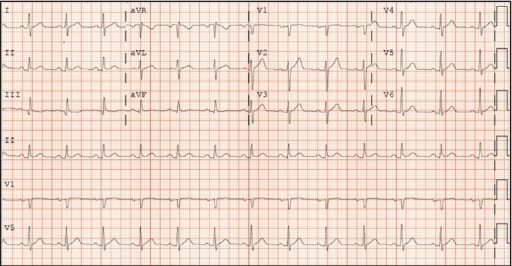A wave’s energy is proportional to its amplitude squared ( or ).
Oscillation, like the square \(x^2\) in a spring system and the "kinetic term" with a \(v^2\) in it
A wave’s energy is proportional to its amplitude squared ( or ).
Oscillation, like the square \(x^2\) in a spring system and the "kinetic term" with a \(v^2\) in it
for all electromagnetic waves
The electromagnetic wave equation: $$c=\lambda f$$ ...simple yet powerful.
PhET Explorations: Radio Waves and Electromagnetic Fields
One of the best Interactive Simulations. I completely recommend it. Download the java file, then open it. Try the "radiated field" option -- it is spectacular.

result
Another way to look at this quotient, \(\frac{E}{B}=c\) involves Newtons of force.
A broadcast antenna is specially designed to enhance the rate of electromagnetic radiation
enhance
Electromagnetic waves carry energy
They carry energy \(E\) and momentum \(p\).
charges radiate whenever they are accelerated
Stated as an aside, but this is a critical concept. The source of electromagnetic radiation is accelerating charge, like the northern lights

For clarity, the waves are shown only along one direction, but they propagate out in other directions too.
In fact, the intensities of radiation in each direction is controlled primarily by the shape and dimensions of the antenna.
The electric and magnetic fields (E and B) near the wire are perpendicular;
Profound. Why should lightning and lodestones have this affinity, i.e., that the \(\vec{E} \perp\vec{B}\)?
 Lightning
Lightning
 Magnetite
Magnetite
Show that, when SI units for and are entered, the units given by the right-hand side of the equation in the problem above are m/s.
One-time exercise, to get over the strangeness of \(\epsilon_0\) and \(\mu_0\).
Hertz’s Observations
Discussed in Session 28.
When the values for and are entered into the equation for ,
Now we can see where the mysterious constants, \(\epsilon_0\) and \(\mu_0\) come in and combine for the speed of light, $$c^2=\frac{1}{\mu_0 \epsilon_0}$$
Maxwell’s equations are paraphrased here in words because their mathematical statement is beyond the level of this text.
WAY beyond

An LC circuit is analogous to a mass oscillating on a spring with no friction and no driving force.
Oscillation analogy, similar to the diagram in Session 27. https://youtu.be/T_2R9JBu89E
This expression is similar to that for the energy stored in a capacitor.
Nice!
This is difficult in most cases
I.e., tons of trig and calculus
damaging switching equipment
Blackout!
The larger the self-inductance of a device, the greater its opposition to any change in current through it.
Can lead to huge arcing of current
The induced emf is related to the physical geometry of the device and the rate of change of current.
ANother significant dependence
We therefore concentrate on the rate of change of current, , as the cause of induction.
Significant: \(\mathcal{emf}\, \propto \, \frac{\Delta I}{\Delta t}\) is going to lead to oscillation
this is given, since the bar magnet’s field is complex
A dodge. The average field value requires a ton of calculus and trig!
(a) When this bar magnet is thrust into
The coil gains RIGHTWARD field lines, do the coil's induced current produces leftward field lines, \(\vec{B}_{coil}\)
Images (b) and (c) show induced fields \(\vec{B}_{coil}\) consistent with Lenz' Law.
The minus sign in Faraday’s law of induction is very important.
Another big understatement!
product of the area and the component of the magnetic field perpendicular to it.
If we were to make a full general definition, accounting for shapes of circuit and of the field, then there'd be
the magnetic flux, ,
The flux must now be dealt with!
most electric generators
Like Grand Coulee Dam on the Columbia River.

the star Mizar, in the middle of the Big Dipper’s handle, appeared through his telescope as two stars.
Mentioned in Lecture 22. https://youtu.be/ZJOsVs0kzgw
spectroscopic binary
Mentioned in Lecture 22. https://youtu.be/ZJOsVs0kzgw
railroad car
Nifty YouTube of sound waves Doppler shifting, about 0:40. https://youtu.be/w0AadZ1bs78
If a star is moving toward or away from us, its lines will be in a slightly different place in the spectrum from where they would be in a star at rest
"Complicating factor," yes, but this Doppler shifting is something we understand, and it gives us basic leverage to extract more information:
Here is an interesting diagram of Doppler shift information uncovering currents underneath sunspots!:
increased wavelength and decreased frequency
Because the speed of light c is a constant, and because the electromagnetic wave equation is c = λf,
Observer C sees the waves stretched out by the motion and sees a redshift
The arrow of Observer C's wavelength is slightly off, too short. It should go from the top edge of the dark red circle to the top edge of the next circle in (reddish pink).
one of Einstein’s motivations was to solve difficulties in knowing how different observers see magnetic and electric fields.
As I always say, "What does the observer see?"
Magnetic Field Created by a Long Straight Current-Carrying Wire: Right Hand Rule 2
Will mention in Session 20 or 21.
Figure 3.
Needs a third sub diagram that shows the reversed current.
The torque reverses once the loop rotates past θ = 0.
Would be a restoring force, leading to oscillation, if current continues in the initial direction.
can be shown
...using tons of trig and calculus!
Figure 2 shows views of the loop from above.
Important diagram
When current is passed through the loops, the magnetic field exerts torque on the loops, which rotates a shaft.
We will try this demonstration in Friday's session 23.
MHD propulsion for nuclear submarines has been proposed, because it could be considerably quieter than conventional propeller drives.
Cf., The Hunt for Red October.
Calculating Magnetic Force on a Current-Carrying Wire: A Strong Magnetic Field
Will review this in Session 23.
The magnetic field exerts a force on a current-carrying wire in a direction given by the right hand rule
We viewed this force effect in Session 21, with the big horseshoe magnet and the thick copper strip between the poles of the magnet.

Figure 2. A negatively charged particle moves
We will work out an example from this set up in our Session 21.
Example 1:
Bypass
The properties of charged particles in magnetic fields are related to such different things as the Aurora Australis or Aurora Borealis and particle accelerators.
For Exam 2, we will bypass the aurora and other examples past this point.
mass spectrometer
Like in CSI
in outer space
Cosmic rays are protons and other particles blown out by supernova detonations and big galactic black holes.

RHR-1 states that, to determine the direction of the magnetic force on a positive moving charge, you point the thumb of the right hand in the direction of , the fingers in the direction of , and a perpendicular to the palm points in the direction of .
I severely hate this version of the right hand rule. However, other semingly normal people might like it, so I will include it in the textbook without mass crossouts.
relatively simple
"relatively simple" ← nice, but do not forget the appearance/disappearance of the magnetic field depending on the motion of the observer.
Is the Earth’s magnetic field parallel to the ground at all locations? If not, where is it parallel to the surface? Is its strength the same at all locations? If not, where is it greatest?
This is a good set of questions to ask of the magnetic field of Earth.
Theoretical image of field lines:

Figure 2.
Very important diagram.
later
As reviewed in Session 20.

Magnetic field lines are continuous, forming closed loops
Always true, unlike electric field lines. There are electric monopoles, e.g., proton and electron, with porcupine and anti-porcupine field lines. There are looped \(\vec{E}\) field lines starting with a dipole array.
Magnetic field lines can never cross
Ditto with \(\vec{E}\) field lines
The strength of the field is proportional to the closeness of the lines.
Flux again.
The direction of the magnetic field is tangent to the field line at any point in space. A small compass will point in the direction of the field line.
Good -- similar to our idea about electric field lines.
enabled him to create his revolutionary theory of relativity
NOT
crudely
crude indeed. As far as we can tell, electrons have no structure, so saying that it spins on an axis like a planet is very crude. We make do, saying that the electron has intrinsic spin angular momentum, \(\plusmn \frac{\hbar}{2}\)
Electromagnetism is the use of electric current to make magnets.
Moving charge is the source of the magnetic field.
they can also be magnetized
Any large structure built of steel, like a building of steel girders or a warship, can be magnetized by pounding the steel: pile drivers, riveters, etc. Liberty ship, keel plates
Liberty ship, keel plates
Ferromagnets
This topic should follow "Electromagnets" because we understood electromagnets a century earlier than we savvied ferromagnetism (iron atoms as tiny electromagnets).
sunspots always occur in pairs that are north and south magnetic pole
Check for paired white-and-black spots on the Sun's magnetogram. The Sun is pretty quiet now, however.
Figure 2.
So the magnetic pole up in arctic Canada is actually an S!!
Further experimentation shows that it is impossible to separate north and south poles in the manner that + and − charges can be separated.
Might be no such thing as a magnetic monopole. Magnets seem only to come as dipoles.
All electric motors, with uses as diverse as powering refrigerators, starting cars, and moving elevators, contain magnets. Generators, whether producing hydroelectric power or running bicycle lights, use magnetic fields.
We can thank Michael Faraday for these developments.
small scale
WHat an understatement! Transistors on various electronics chips are on the order of a few dozen nanometers!
Discharging a Capacitor
Check the Session 18 extension in YouTube.
the time constant for an circuit
The circuit's "time constant" \(\tau = RC\) is related to the half-life of the circuit. Both terms are used by scientists in exponentially growing or decaying systems.
Combinations of Series and Parallel
Will be helpful when working on HW 2.
Figure 4. This combination
We will work out a few like this on Friday, 10/4.
by connecting wires having negligible resistance
idealization
Power is energy per unit time (watts)
So after an amount of time \(\Delta t\), all of the energy of a battery will dissipate at the circuit element, e.g., the light bulb, where stored Joules from the battery are dissipated as light and heat. At that point, the bulb goes cold.
Since all of the current must pass through each resistor, it experiences the resistance of each
Conservation of current.
Thus the energy supplied by the source is , while that dissipated by the resistors
better
the loss of electrical power, called a voltage drop,
NO! NO! NO! Voltage is measured in \(\frac{Joule}{Coulomb}\) but power is different, \(\frac{Joule}{second}\)!!
Resistors are in series whenever the flow of charge, called the current, must flow through devices sequentially.
Nice definition
Figure 1. (a) A series connection of resistors. (b) A parallel connection of resistors.
We will have discussions about these diagrams on Friday, 10/4.
electromotive force, abbreviated emf
This term traces way back to the 1800s, before we had figured out everything and unified the electromagnetic theory. So calling it a force is anachronistic, but we still use it for the sake of custom. The common symbol is an upper case script E, \(\mathcal{E}\)
the relationship of power to resistance
This is what scientists and engineers call \(I^2R\) heating, a.k.a., Joule heating. Cf., Ch. 21.3
A tidal force results from the unequal gravitational pull on two sides of a body.
Mentioned in Lecture 14, Fall 2019
He was thinking about momentum! In the momentum view, the skateboarders’ values actually are equal in magnitude, though their vectors have opposite directions, positive for rightward, negative for leftward.
This was as far as the reading went to prepare for Exam 1. The sections after this will be on Exam 2!
A power transmission line is hung from metal towers with glass insulators having a resistance of . What current flows through the insulator if the voltage is 200 kV? (Some high-voltage lines are DC.)
We will work out this exercise in Session 13, if possible
pipe
a pipe filled with gravel
inversely
more current that gets through to the device, less resistance.
transfer energy
Dissipation of energy into the metallic lattice of the conductors, not to the hair dryer or other device hooked up to the circuit.
Such a linear relationship doesn’t always occur.
For instance, in the solar corona, positive ions, protons and electrons are flying around in "current sheets" blazing through the corona, and we have a hard time figuring out the Ohmic resistance for such complicated currents. YouTube
Repeat the above example on Example 3, but for a wire made of silver and given there is one free electron per silver atom.
Will work this out in Session 13
The batteries of a submerged non-nuclear submarine supply 1000 A at full speed ahead. How long does it take to move Avogadro’s number () of electrons at this rate?
Good problem to try out.
During open-heart surgery
also out of place
(a) A defibrillator sends a 6.00-A current through the chest of a patient by applying a 10,000-V potential as in the figure below. What is the resistance of the path? (b) The defibrillator paddles make contact with the patient through a conducting gel that greatly reduces the path resistance. Discuss the difficulties that would ensue if a larger voltage were used to produce the same current through the patient, but with the path having perhaps 50 times the resistance. (Hint: The current must be about the same, so a higher voltage would imply greater power. Use this equation for power: .)
This problem is slightly out of place... might be better in a later section of Ch. 20
signal moves
information....
find
Big number, \(8.342\times 10^{28}\), but a few feet of 12 gauge wire is not nearly one cubic meter.
diameter of 2.053 mm
A specification of manufacture.
Example 3: Calculating Drift Velocity in a Common Wire
We will work through a calculation like this in Session 13, 9/25/19.
The density of charge in a system cannot easily be increased,
a lot like water, which is pretty much an incompressible fluid
on the order of .
less than 1 millimeter per second!
speed of light
$$c=3\times 10^8 \frac{m}{s}$$
Negative charges move in the direction opposite to the electric field.
We can do all of our calculations etc. with conventional current \(I\left(t\right)\), but when actually trying to understand what is physically moving so that you can capture it or track it, you have to think about electrons, if you are in a regular circuit. Electrons require "reverse psychology."

Franklin
and everyone else until about 1899
appliances
E.g., Kenmore 81422 washer/dryer, minimum circuit rating: 20 Amps.
fuses and circuit breakers rated in amperes (or amps)
Cf., for example, the BP-ATM-15-RP fuse for Ford F-150,
is the amount of charge passing through a given area in time .
refer to Fig. 1
rate at which charge flows
"...rate at which charge flows" past a given point in a conductor, $$\frac{\Delta q}{\Delta t}$$
electric
although the photo is a water current! 🤦🏻♂️
Capacitors
The authors should title this section, "19.7 Energy Stored in Defibrillators" ; )
In open heart surgery, a much smaller amount of energy will defibrillate the heart. (a) What voltage is applied to the capacitor of a heart defibrillator that stores 40.0 J of energy? (b) Find the amount of stored charge.
basic
(a) What is the energy stored in the capacitor of a heart defibrillator charged to ? (b) Find the amount of stored charge.
A basic question
The first charge placed
This and the following few sentences are describing a calculus equation using words instead of formulas.
Energy Stored in Capacitors
This formula, \(E=\frac{1}{2}\frac{1}{C}Q^2\) is actually related to oscillating currents in a circuit, as we shall see in Ch. 23.
joules
Energy delivered from a defibrillator's cap. E.g., "At 200 J, the ZOLL RBW delivers more average current to high-impedance patients than any other biphasic waveform."
Zoll makes all kinds of defibrillators, rated in Joules.
beat normally.
aka, sinus rhythm,

What total capacitances can you make by connecting a and an capacitor together?
Hmmmmmm...This would make a lovely iClicker item.

Figure 6. A combination of series and parallel
Uh oh
Suppose you want a capacitor bank with a total capacitance of 0.750 F and you possess numerous 1.50 mF capacitors. What is the smallest number you could hook together to achieve your goal, and how would you connect them?
A brain burner.... work this out before Monday lecture if you can!!!!!!
Find the total capacitance of the combination of capacitors
First two capacitors are parallels: \(10\mu F\) and \(2.5\mu F\), so they simply add up the preliminary combo capacitance: \(C_{12}=12.5\mu F\). Easy.
However, there is one cap in series with those first two, so now you employ the reciprocals formula for the total equivalent capacitance \(C_{eq}\), viz.
$$\frac{1}{C_{eq}}=\frac{1}{C_{12}}+\frac{1}{0.30\mu F}$$
So the common denominator is semi-nasty, \(cd=\left(12.5\right) \left(0.3\right) \longrightarrow 3.75 \)
The rest is fractions. Don't forget to flip your \(\frac{1}{C_{eq}}\) fraction to get \(C_{eq}\) itself.
More complicated connections of capacitors can sometimes be combinations of series and parallel
We will get into this kind of brain burner on Monday, plus in a lab this coming week.
Total capacitance in parallel is simply the sum of the individual capacitances.
Easier
parallel connection
The top of three capacitors are equivalent to one big plate, and same for the bottoms.
Entering the given capacitances
must use common denominators!
for any number of capacitors connected in series.
For \(n\) capacitors in series, $$\frac{1}{C_{eq}}=\frac{1}{C_1}+\frac{1}{C_2}+\cdots+\frac{1}{C_n}$$
total voltage is the sum of the individual voltages
...or in Dr. Brueckner's parlance...
$$\Delta V=\frac{Q}{C_{eq}}=\frac{Q}{C_1}+\frac{Q}{C_2}+\frac{Q}{C_3}$$
voltages across the individual capacitors are
Note that the assumed charge load at the top of the first capacitor and at the bottom of the third capacitor are assumed to be the same size, \(\pm Q\). This is an application of the conservation of charge: the number of electrons stolen from the top plate is the same as the load of surplus electrons pushed into the bottom plate.
An equivalent capacitor
Total voltage drop = \(V\) of the battery! But this time it is split up between three separate capacitors
Multiple connections of capacitors act like a single equivalent capacitor.
A single equivalent capacitance, \(C_{eq}\)
water
First mentioned in Session 8.
Artist’s conception
Nice
Typical capacitors range from fractions of a picofarad to millifarads .
Household size units for capacitors. Go into Radio Shack and check them out.

permittivity
This property, permittivity, is related to a substance's ability to be polarized. You can look up the specs for permittivity for many substances, e.g., for muscle fiber. However, the vacuum also takes a value, denoted \(\epsilon_0\) and used here for parallel plates, even though the vacuum has no substance.
Since the field lines end on charges in the dielectric, there are fewer of them going from one side of the capacitor to the other.
I detest this description, but it sort of makes some sense.
more charge
...from the battery
conduct
Fried dielectric time!
dielectric constant
Many studies of dielectric properties, biological and otherwise.
breakdown
Breakdown:
across
For a singly ionized sodium atom, the time to cross this membrane is about \(\Delta t = 0.02\: ns\)... pretty quick!
membrane
As mentioned in lecture. For those of you studying biology, this is an important application
thin foils placed close together
This is why the authors show the rolled up capacitor in Fig. 1
the total number is proportional to the number of charges.
flux concept
rolled
Can be approximated as parallel plates, with an insulating layer in between.
store
They also store energy in the electric field. This is the first time we have had something other than a Sir Isaac Newton \(F=ma\) style object with mass that can carry energy.
A capacitor is a device used to store electric charge.
A great paragraph about what a capacitor is and how it works
No wonder it took astronomers a long time before they could measure such tiny shifts.
The ancient Greeks could not measure with this precision, nor could the great Tycho Brahe. Kepler and Galileo, Newton and Halley: nope. But by the 1800s, yup, it started becoming possible, with better telescopes and measuring devices.
In this text, we will use light-years as our unit of distance, but many astronomers still use parsecs when they write technical papers or talk with each other at meetings. To convert between the two distance units, just bear in mind: 1 parsec = 3.26 light-year, and 1 light-year = 0.31 parsec.
This is the end of the material in Ch. 19 needed for Exam 1.
Back in the days when most of our distances came from parallax measurements, a parsec was a useful unit of distance, but it is not as intuitive as the light-year.
True, but astronomers still use both pc and LY!
parallax
Parallax angle P, in the diagram
Bessel made the first authenticated measurement of the distance to a star (61 Cygni) in 1838, a feat that had eluded many dedicated astronomers
Actually, a successful parallax measurement would've satisfied Plato, Aristotle et al., in their day, that Earth orbited the Sun. Unfortunately, they did not have good enough technology. But neither did Kepler and Galileo. Bessel bagged 61 Cygni 200+ years after Galileo.
Triangulation.
This is essentially what astronomers do when they make pallalax measurements. But for stars, it is a much larger triangle.
Explain in your own words why equipotential lines and surfaces must be perpendicular to electric field lines.
I like this question. It is not a calculation, but it would be very nice to ask in class.........hmmmmm

Problems & Exercises
A lot of sketching.... for after Exam 1!!
The equipotential lines around the heart, the thoracic region, and the axis of the heart are useful ways of monitoring the structure and functions of the heart.
Very interesting
One of the most important cases is that of the familiar parallel conducting plates
We talked about this a lot in Session 9.
the equipotential lines can be drawn simply by making them perpendicular to the electric field lines.
A nice sketching exercise, equipotential lines of a dipole field. We might go through this in our first session after Exam 1.
Because a conductor is an equipotential, it can replace any equipotential surface. For example, in Figure 1 a charged spherical conductor can replace the point charge, and the electric field and potential surfaces outside of it will be unchanged, confirming the contention that a spherical charge distribution is equivalent to a point charge at its center.
Huge amount of difficult calculus behind this paragraph, enough to choke Sir Isaac Newton's horse.
There can be no voltage difference across the surface of a conductor, or charges will flow.
Correct. In a conducting material, the surplus charges will redistribute themselves into dynamic equilibrium, equal distances from each other.
Work is zero if force is perpendicular to motion.
from PHY2053!!
electric field lines point radially away from the charge, they are perpendicular to the equipotential lines
True in general for small patches of spacetime, as I mentioned at the end of Session 9.
Equipotential lines are always perpendicular to electric field lines.
Discussed in Session 9
Equipotential Lines
Visual way of thinking about the electromagnetic field, and very useful in quantum mechanics.
Does this diagram remind you of a hydrogen atom/Quantum_Mechanics/09._The_Hydrogen_Atom/Bohr's_Hydrogen_Atom)?
analogous to taking sea level as when considering gravitational potential energy, .
As I mentioned in an earlier annotation.
Example 2: What Is the Excess Charge on a Van de Graaff Generator
Bypass this example
Example 1: What Voltage Is Produced by a Small Charge on a Metal Sphere?
Bypass this example
The potential at infinity is chosen to be zero.
Just as we have the freedom to choose the elevation at which \(GPE=0.0\: J\) in a free fall problem near the surface of Earth: gym floor for a basketball problem, foot of a cliff for a Ferrari driving off a cliff problem, or the top of the same cliff for the Ferrari problem.
NASA will take \(GPE=0.0\: J \text{ as } r \longrightarrow \infty \) since they are ranging way past the surface of Earth and out into space.
it can be shown that
One of the most annoying phrases in a physics textbook, "it can be shown that..." It is an author's evasive maneuver to avoid pages and pages of nasty calculus equations. Fortunately, that is okay in PHY2054!
spherical charge distributions (like on a metal sphere) create external electric fields exactly like a point charge.
Like the top of a Van de Graaff generator
general relationship between voltage and electric field
Cf., Session 9 in YouTube
Electron Gun
Yeah, the old timey method for generating a tv picuture, in the old tv tubes you used to see before flat screen technology took over.
 and
and
 The gun is in back, targeted at the front tv screen.
The gun is in back, targeted at the front tv screen.
field creates enough ionization
I.e., ripping outer electrons from \(O_2\), \(N_2\) and \(H_2 O\) molecules, making them into conduction electrons. BANG!
since points create greater fields than smooth surfaces.
smooth versus sharp surfaces... Notice that insulators on telephone poles are nicely rounded ceramic or glass:
 and here is a closeup:
and here is a closeup:

E = V/d.
To encode directionality, should be $$\vec{E}=-\frac{V}{d}$$\ or better yet, $$\vec{E}=-\frac{\Delta V}{\Delta s}$$
...but the authors are only talking about magnitudes here.
units for electric field are volts per meter.
Include this with my comments on units in Session 9.
since the path is parallel to the field,
...for this parallel plates example only. In general, one could have any kind of parabolic path between the plates, just as between elevations \(y=0.00\: m\) and \(y=40.0\: m\) from the top of the UCF library to the sidewalk, you could have any number of differing parabolic trajectories for a water balloon, depending on how hard you throw it and in what direction.
The electric field strength between two parallel conducting plates separated by 4.00 cm is . (a) What is the potential difference between the plates? (b) The plate with the lowest potential is taken to be at zero volts. What is the potential 1.00 cm from that plate (and 3.00 cm from the other)
This is another nice exercise.
What is the strength of the electric field between two parallel conducting plates separated by 1.00 cm and having a potential difference (voltage) between them of
Good. I like this basic problem
two parallel metal plates
Important example
move 5000 C of charge
What does it mean for a battery to "move 5000 Coulombs"? A battery is rated in Amp hours, e.g.,

An amp hour is a unit of charge: $$1.00\:A \times 1.00\:hour$$ $$1.00 \text{Coulomb}/\text{sec} \times 3600\:sec$$ $$3600 Coulombs$$
To have a physical quantity that is independent of test charge, we define electric potential
discussed in Session 8
PE can be found at any point by taking one point as a reference and calculating the work
Similar to the customary approach to GPE in a free fall system. You can define any elevation you like to be the zero point of the potential energy function, $U$... $$U\left(y\right)=-mg\Delta y$$
the potential energy (because it depends only on position)
A scalar-valued function of position, though a ton of trig is usually encoded in the function
as if the charge is going down an electrical hill
Emphasis on "as if" !!! ...because of the ambiguity in forces and potential energies that rises from having positive and negative charges
Electric Potential
Further abstraction. \( \Delta V=-E \Delta x \) in a uniform field \(E\), e.g., between parallel charged plates. Does that formula remind you of the work formula?
A motorcycle battery, for example, is small and would not be very successful in replacing the much larger car battery, yet each has the same voltage.
Each has the same voltage -- determined by the cource charge array, not the apparatus (motorcycle vs. car)
ions cross cell membranes
ionic pumps
Two equivalent representations of the electric field
Reviewed in Session 8
A certain five cent coin contains 5.00 g of nickel. What fraction of the nickel atoms’ electrons, removed and placed 1.00 m above it, would support the weight of this coin? The atomic mass of nickel is 58.7, and each nickel atom contains 28 electrons and 28 protons.
OH MY GOODNESS! 
At what distance is the electrostatic force between two protons equal to the weight of one proton?
A brain burner!!!
How do you split the charge to achieve the greatest force?
Not sure what this is asking. BYPASS
A test charge of is placed halfway between a charge of and another of separated by 10 cm. (a) What is the magnitude of the force on the test charge? (b) What is the direction of this force (away from or toward the charge)?
We worked on similar calculations in class.
f two equal charges each of 1 C each are separated in air by a distance of 1 km, what is the magnitude of the force acting between them? You will see that even at a distance as large as 1 km, the repulsive force is substantial because 1 C is a very significant amount of charge.
Fairly easy to calculate, if you know the value of Coulomb's constant, \(k\)
How far apart must two point charges of 75.0 nC (typical of static electricity) be to have a force of 1.00 N between them?
I like this one, a good basic workout.
distance between two objects squared to an accuracy of 1 part in .
Theoretically, an inverse r<sup>2</sup> force has infinite range. So: gravitation and electromagnetism.
Caveat: electromagnetic interactions can be screened, like losing your cell phone signal inside certain buildings on campus.
How many electrons does it have?
Nice exercise, relating the metric unit of charge, the Coulomb, to the fundamental charge,
e=1.602 x 10<sup>-19</sup> Coulomb
Hint: if its net charge is negative, then it has EXTRA electrons.
A 50.0 g ball of copper has a net charge of . What fraction of the copper’s electrons has been removed? (Each copper atom has 29 protons, and copper has an atomic mass of 63.5.)
A brain burner!
When a glass rod is rubbed with silk, it becomes positive and the silk becomes negative—yet both attract dust. Does the dust have a third type of charge that is attracted to both positive and negative? Explain.
I like this question.
attraction of water to the charged rod
I like this exercise. It is a cool demonstration you can do at home!
...How do you explain the fact that the stream dips slightly toward the comb (as in the photo) and never away from the comb?
The same effect
The electrons at the left hand side of the grey conducting block flee the copper colored rod, which is net negative. Those fugitive electrons head over to the right hand side of the conducting block. POLARIZED!
This is basically what happened with the soda pop can demonstration.
allowing electrons to be attracted from the earth’s ample supply
Earth is negatory
Charging by induction.
polarize, then separate
the leaves
positive charges "move" to the sharpest topography of the device, just as they move to a students hair when touching the Van de Graaff generator.
Some of the electrons
e.g., some of the valence electrons
salty water
...as opposed to pure water, no dissolved minerals, which is actually a fair insulator.
The Van de Graaff Generator
Demonstrations in Session 7, Sept. 11